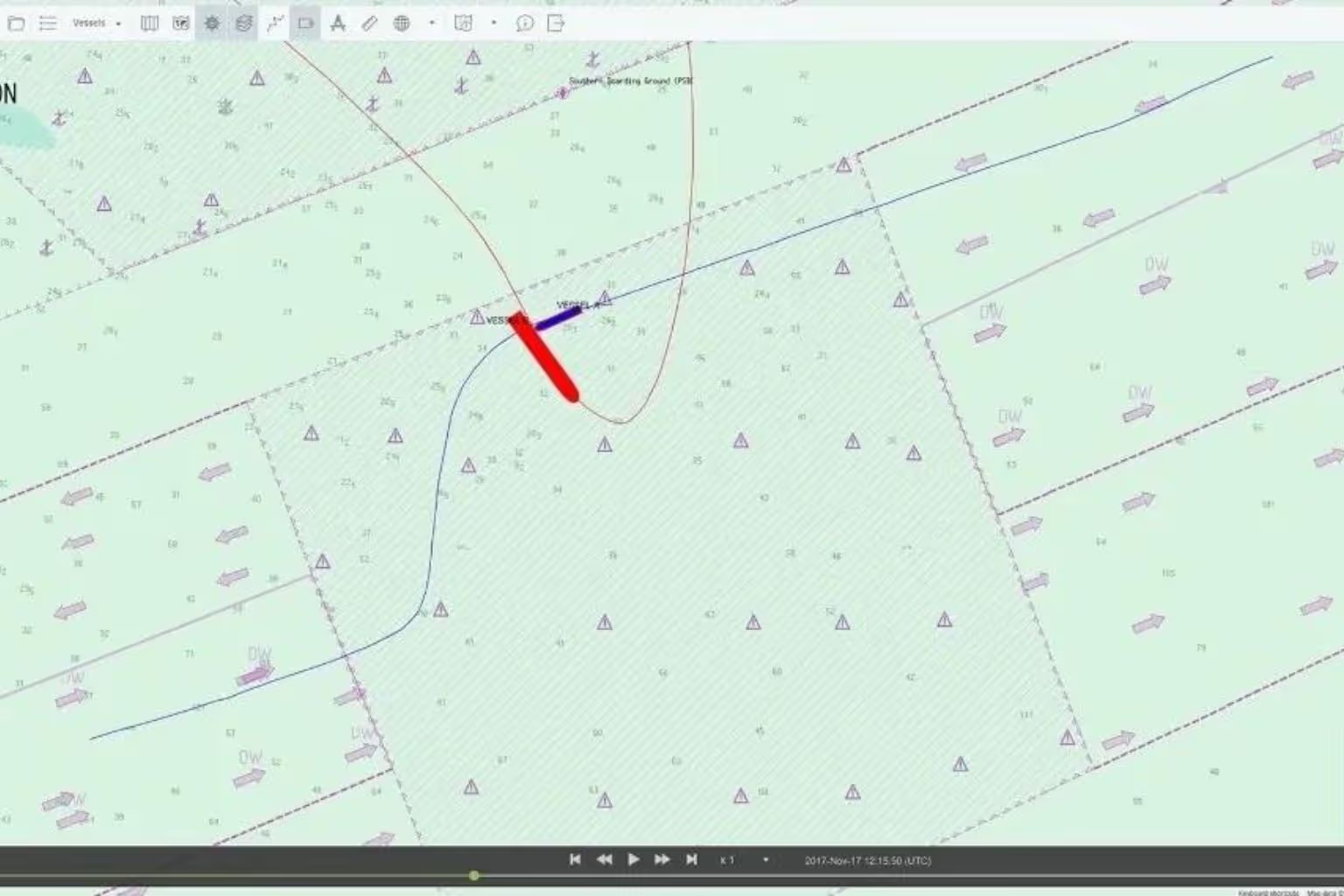
Turn on social media and it’s hard to avoid video clips of marine collisions, groundings and other mishaps at sea. Nothing escapes the smart phone camera as cruise ships plough into docksides or container ships get lodged in busy waterways.
Caught on camera, these dramatic incidents then get replayed by the world’s media accompanied by the inevitable armchair experts speculating about what failed and what went wrong.
High profile marine accidents can wind up in the courts if the parties involved dispute who or what was to blame. However, consensus can be reached far more efficiently and cost-effectively by obtaining and analysing the marine navigation data recorded and transmitted by vessels which builds an accurate picture of what has happened.
Before digital, marine accident investigations relied on eye witness reports from the master and officer of the watch, and in later cases a print-off from a course and/or an engine movement recorder. Courts cases could be convoluted and based on statements between the vessels involved, which obviously varied depending on whose side you took.
It would have been possible to work out the angle that the vessels collided at to see the end point of an incident, but there would have been no visibility beyond that for investigators other than log books and witness statements.
Accidents will happen
Once it was a requirement to install VDRs on vessels during the 2000s and third party AIS data collection really took off in the early 2010s, it became much quicker and less expensive to establish what really happened.
However, there had to be a way of analysing the amount of available data as increasingly sophisticated technologies generated unwieldly amounts of information.
Solis Marine’s in-house developed Rapid Replay service was first rolled out in 2013 to capture all of this data in a single place, which we then use to analyse the various factors which led to collisions, allisions, groundings and other incidents where the causation isn’t immediately clear.
Today it has become an everyday tool and the starting point for any investigation, allowing our expert mariners to assess and provide their opinion on what has happened.
The platform aggregates data drawn from multiple sources, the main ones being AIS, VDR, or any other data source with at least a timestamp and position, to give insurers and lawyers an accurate representation of the incident concerned, often within 24 hours – and at a fixed cost.
Available data from every source is animated on our online Rapid Replay platform, generating an interactive 2D animation of the incident. The positions of individual vessels can then be seen relative to one another and on nautical charts.
As a tool, our Rapid Replay platform gives the user complete control over a reconstruction, clarifying events in the immediate aftermath of an incident, or providing in-depth analysis during complex investigations as they progress from initial review to presentation at court hearings.
The presentation of actual time stamped data shouldn’t leave much room, if any, for misinterpretation or contentious debate, but it’s important to remember that data is never perfect and won’t give you all the answers.
It might be, for example, that originally we have created a reconstruction from third party AIS data. Upon review, the VDR data we can see on the radar images that there is a vessel present that is relevant for causation but was either not transmitting AIS data, or that the data has not been picked up by the third party’s receiver.
It’s down to the expertise of the mariners to analyse the results and consider them in the context of other evidence that may point to issues like this. The better the presentation of the data the easier that analysis is, and the better and quicker the results. This is also where the benefit of an in-house developed system comes into play as our mariners can refer directly to myself or another of the data analysis team to discuss what is being shown and what is possibly not being shown.
Data will become even more important, and the principal way to analyse incidents once we see the advancement of unmanned vessels and autonomous ships which will eliminate the visual in-person witness from the evidence chain.
Autonomous ferries and unmanned Navy demonstration vessels are currently well marshalled and there haven’t been any reported casualties as far as I’m aware, although there is an anecdote about one rogue autonomous vessel which allegedly set off on its own little mission from the south coast of England to France – and was returned safely back over the Channel with a baguette and some cheese.
It will be interesting to see what data recording and storage requirements any potential new IMO code for autonomous vessels, or amendments and additions to current regulations requires and what will need to be recorded and standardised as we usher in a new era for shipping and maritime investigation.